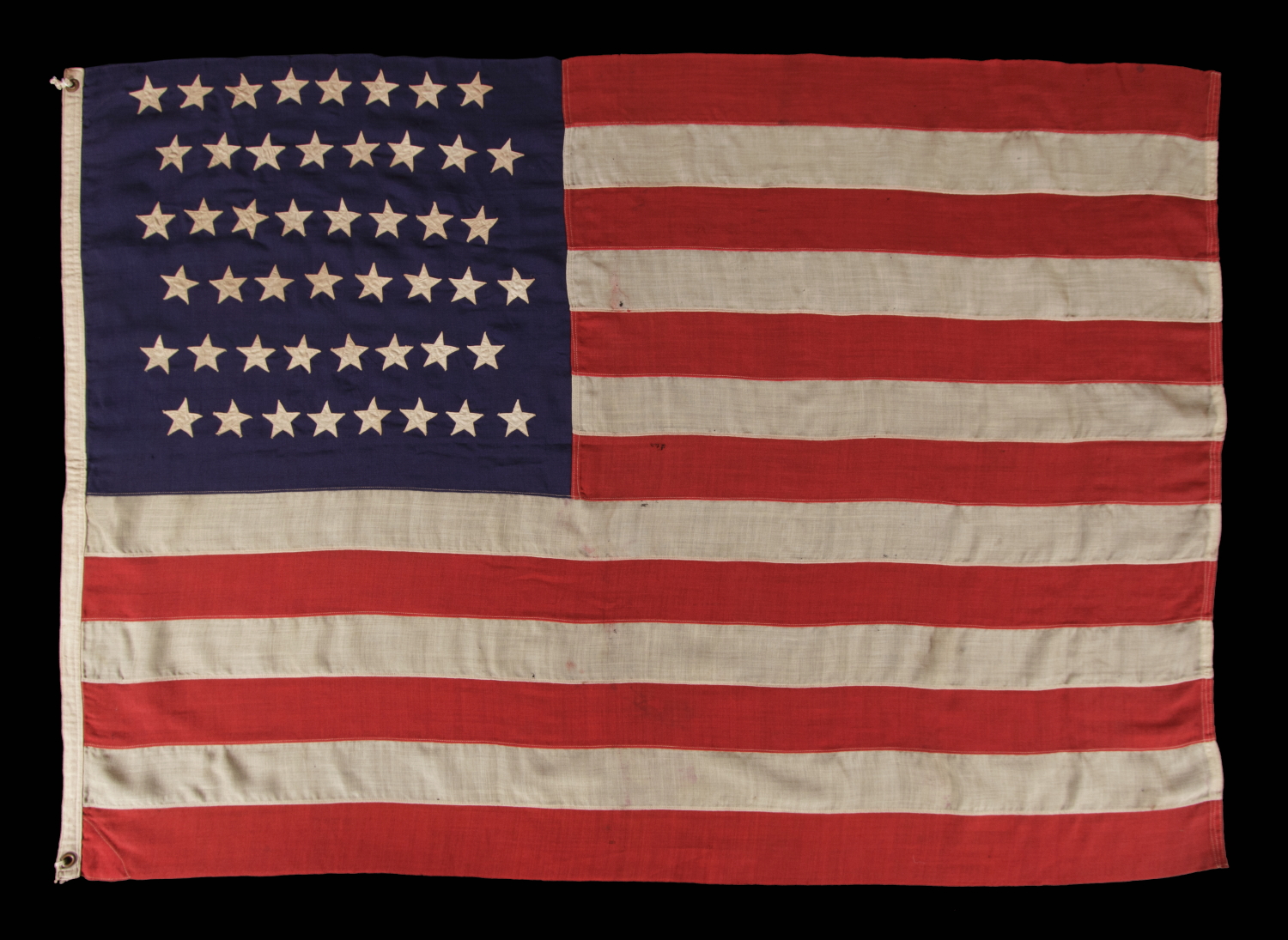
| |
48 STARS IN STAGGERED ROWS ON AN ANTIQUE AMERICAN FLAG MADE BETWEEN 1912 AND 1918, OR PERHAPS PRIOR; REFLECTS ARIZONA & NEW MEXICO STATEHOOD |
|
| Available: |
Sold |
| Frame Size (H x L): |
|
| Flag Size (H x L): |
48" x 66" |
|
| Description....: |
|
In 1912, President Taft passed an executive order that dictated, for the first time, an official design for the star field for American flags produced for the Department of the Government. This consisted of 6 justified rows of 8 stars, perfectly aligned, with all stars pointing upward (one point skyward) and having a specified shape (profiles with 5 points).
Before 1912, 48 star flags were sometimes produced in anticipation of the future addition of New Mexico and Arizona, or perhaps other territories, depending on the time period and beliefs of the maker regarding the order of incoming states. These flags typically have 6 staggered rows of 8 stars, all pointing upward, as-is the case on the particular example that is the subject of this narrative. 48 star flags in this style have been found with hand-written and printed dates ranging as early as 1896, a full 16 years before we actually reached that number. At this time there were 4 more Western Territories yet to be added and, though the order of accession was unknown, it was generally understood that they would eventually gain statehood. Adding stars before the respective states were even in had been occurring since at least 1860, and it was actually common for flag-makers to produce them with what I call anticipatory star counts, including more stars with the hope to influence people to buy new flags.
Between 1912 and WWI (U.S. involvement 1917-18), the same, unofficial, staggered row arrangement seen on this flag can also be encountered. After this period it basically fades into history and most all flag-makers adopted the official, rectilinear, 6x8 design.
The 48 star flag became official on July 4th, 1912, and was generally used until the addition of Alaska in 1959. It was the official flag during WWI, WWII (U.S. involvement 1941-45) and the Korean War (1950-53).
Construction: The stars of the flag are made of cotton and are double-appliquéd (applied to both sides) of the blue canton. The stitching was done with a lineal machine stitch. Flag-makers generally abandoned this in the early-mid 1890's due to the application of the zigzag stitch in flag manufacture, which allowed the seamstress to bind the edges of a star without having to turn the fabric under. It is unusual to encounter this stitch with a traditional appliqué method in a 48 star example.
The canton and stripes of the flag are made of wool bunting that has been pieced bound with machine stitching. There is a twill cotton binding along the hoist with 2 brass grommets, one each at the top and bottom. Remnants of twine remain knotted in the grommets.
Mounting: The flag has not yet been mounted. We have our own conservation department where expert staff take great care in the mounting and preservation of flags and related textiles. We have conserved and framed thousands of examples, perhaps more than anyone world-wide.
Condition: There is very minor mothing in limited areas and very minor bleeding in the stripes. There is very minor soiling in the white fabric. Many of my clients prefer early flags to show their age and history of use. |
|
|
|
| Collector Level: |
Beginners and Holiday Gift Giving |
|
| Flag Type: |
Sewn flag |
|
| Star Count: |
48 |
|
| Earliest Date of Origin: |
1900 |
|
| Latest Date of Origin: |
1918 |
|
| State/Affiliation: |
Arizona |
|
| War Association: |
|
|
| Price: |
SOLD |
|
| |
Views: 2333 |
|
|
|

